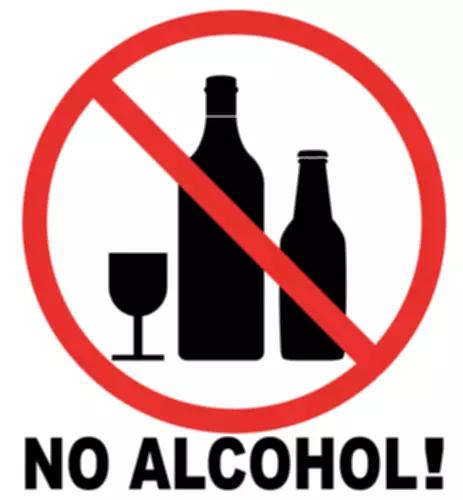
Status epilepticus is a medical emergency that may lead to lasting brain damage or death. Status epilepticus is a life threatening condition in which a person has a seizure lasting longer than 5 minutes without regaining normal consciousness or has more than one seizure within 5 minutes. This alcohol withdrawal seizure article looks at the connection between alcohol, seizures, and epilepsy, as well as treatment options and support. If you’re otherwise healthy and can stop drinking and get treatment, the outlook is usually good. However, sleep disturbances, irritability, and fatigue may continue for months.
You Can Also Gain Weight From Drinking Alcohol
- Supportive care measures, such as taking folic acid and thiamine, may also be helpful.
- This article discusses alcohol withdrawal, its symptoms, and potential complications.
- When people stop consuming alcohol after chronic use, they lose the inhibitory effects of the GABA receptors, resulting in the central nervous system being overstimulated.
- However, AW also provides an opportunity to initiate treatments that may lead to extended sobriety.
- The person should also try to eat three well-balanced meals per day and drink enough water to remain hydrated.
- Some people experience prolonged withdrawal symptoms, like insomnia and mood changes, that can last for weeks or months.
Carbamazepine has been shown to be superior to placebo for the treatment of alcohol withdrawal and to reduce “kindling” effects [51]. Neuroleptic agents, such as haloperidol, are https://ecosoberhouse.com/ useful as adjunctive treatment and reduce agitation and hallucinations [52]. Treatment of alcohol withdrawal with a tapering ethyl alcohol infusion offers biologic plausibility.
How Common Is Delirium Tremens?
- For people AFAB, that means drinking two or more drinks per day and eight or more drinks per week.
- Alcohol withdrawal seizures are common in patients with chronic alcohol use and usually occur between 6 and 48 hours after decreasing alcohol use [29–31].
- In some cases, excessive alcohol consumption may lead people to miss meals or medication, which can also make seizures more likely in people with epilepsy.
- For those with alcohol use disorder, withdrawal is just the first (but very important) step on a long journey to recovery.
It’s important to be honest about your alcohol use — and any other substance use — so your provider can give you the best care. If you don’t already have a supportive network, you can make new connections by joining social media communities dedicated to alcohol-free living. It is followed by the clonic phase in which the person’s limbs jerk rhythmically and rapidly with bending of the large joints such as the elbows and knees. Hypertension is common, and some doctors also prescribe beta blockers during withdrawal. Use of this website and any information contained herein is governed by the Healthgrades User Agreement. Seeking help for addiction may seem daunting and possibly even scary, but there are several organizations that can provide support.
- Alcohol dependence may be treated with various options, including medications.
- Early symptoms of alcohol withdrawal include tremors, headache, insomnia, palpitations, irritability, anxiety, nausea, loss of appetite, excessive sweating, high blood pressure, and rapid heart rate.
- Tapering can help avoid serious withdrawal symptoms, including delirium tremens.
- If you (or someone you’re looking after) experience repeated vomiting, severe shaking or hallucinations, seek medical attention.
- Co-occurring medical problems may obscure the diagnosis and treatment of DT’s or worsen the outcome.
Brain Substrates for Alcohol Withdrawal Seizures
Signs and symptoms of an alcohol use disorder include a preoccupation with alcohol consumption and continuing to drink despite the negative effects of alcohol. This is a serious complication of the alcohol withdrawal syndrome and needs to be treated in a hospital emergency room. These symptoms can sometimes progress to more serious issues, such as hallucinations and alcohol withdrawal seizures. Alcohol withdrawal syndrome is a clinical diagnosis that relies heavily on the history and physical, which is also used to gauge disease severity. When in doubt, clinicians can refer to the DMS-V criteria for diagnosis. A rare but very serious syndrome called delirium tremens can occur during alcohol withdrawal.
Consequently, greater emphasis may now be placed on developing strategies to facilitate long-term sobriety. An important step in this direction may be the development of medications that lack the addiction potential of the benzodiazepines. The antiseizure medications meet these criteria and have the added capacity to suppress kindling. Long-term heavy alcohol use sets up a tug-of-war-like effect in your body. Alcohol is on one side, slowing down central nervous system (CNS) activity. Your CNS controls your body’s automatic processes like breathing and heart rate.

Behavioral health treatment for alcohol problems is often (but not always) covered by insurance. In the United States, most states have low-cost or free rehabilitation programs for those who are uninsured. Research shows people who have a supportive social network are more likely to remain alcohol-free after withdrawal. Those with a wider circle of support have a better chance of staying sober.

Cellular Mechanisms of Alcohol Dependence

Moderately severe AWS causes moderate anxiety, sweating, insomnia, and mild tremor. Those with severe AWS experience severe anxiety and moderate to severe tremor, but they do not have confusion, hallucinations, or seizures. When not properly treated, AWS can progress to delirium tremens (Table 38–10). When people with AUD attempt to quit drinking, they can experience withdrawal symptoms, including seizures or convulsions. Alcohol withdrawal seizures can be managed in a healthcare setting but can be dangerous if you’re at home without access to medical care.



